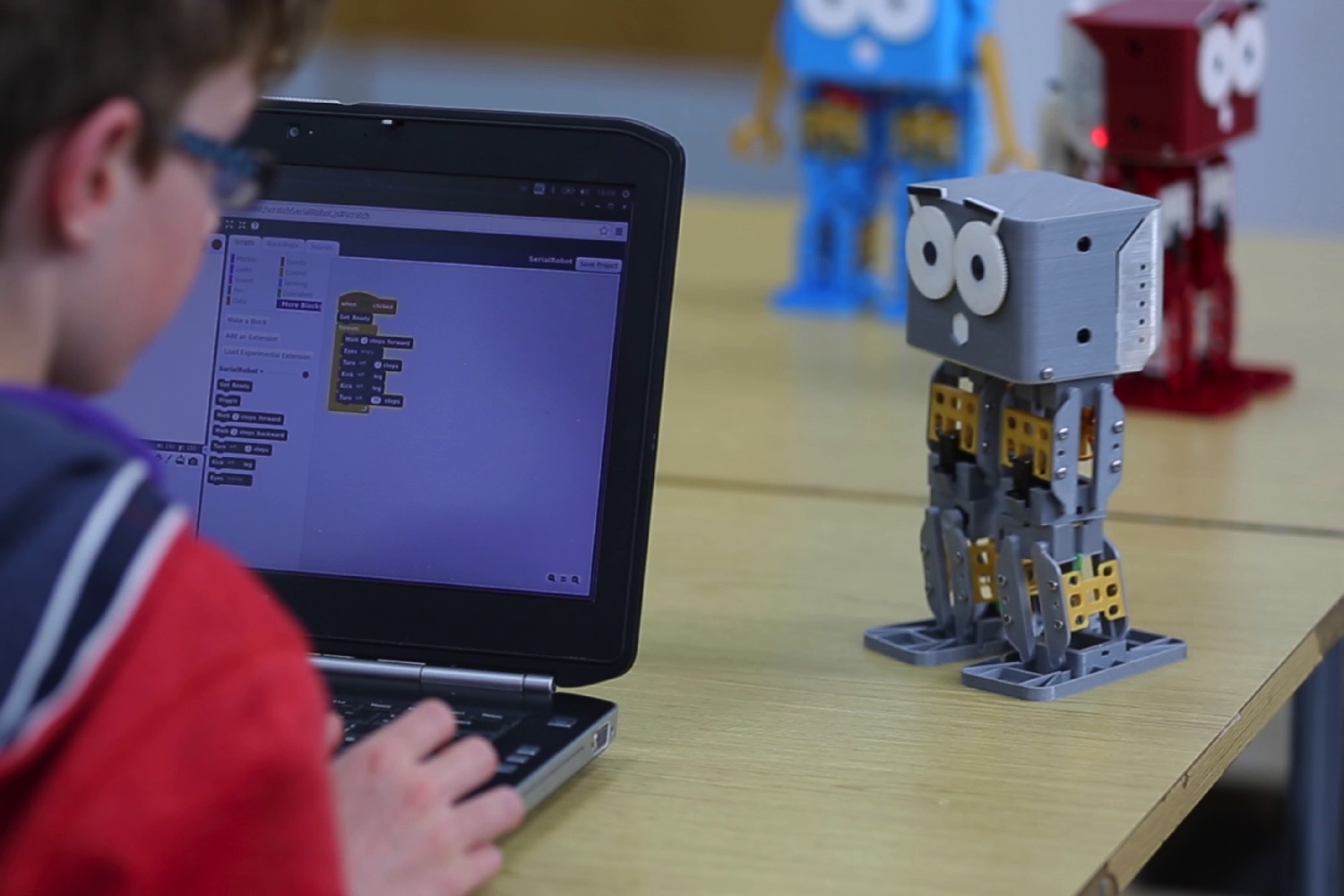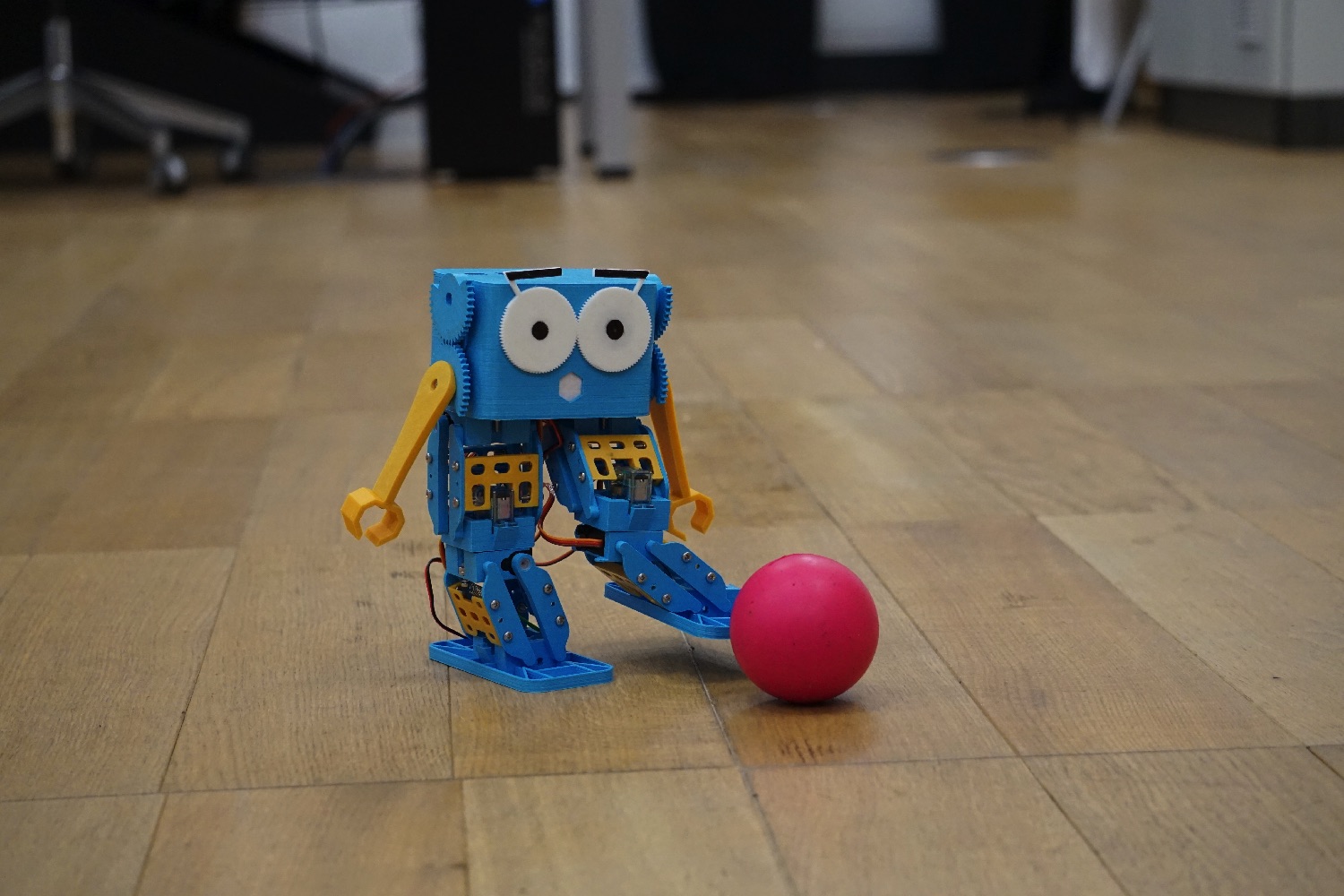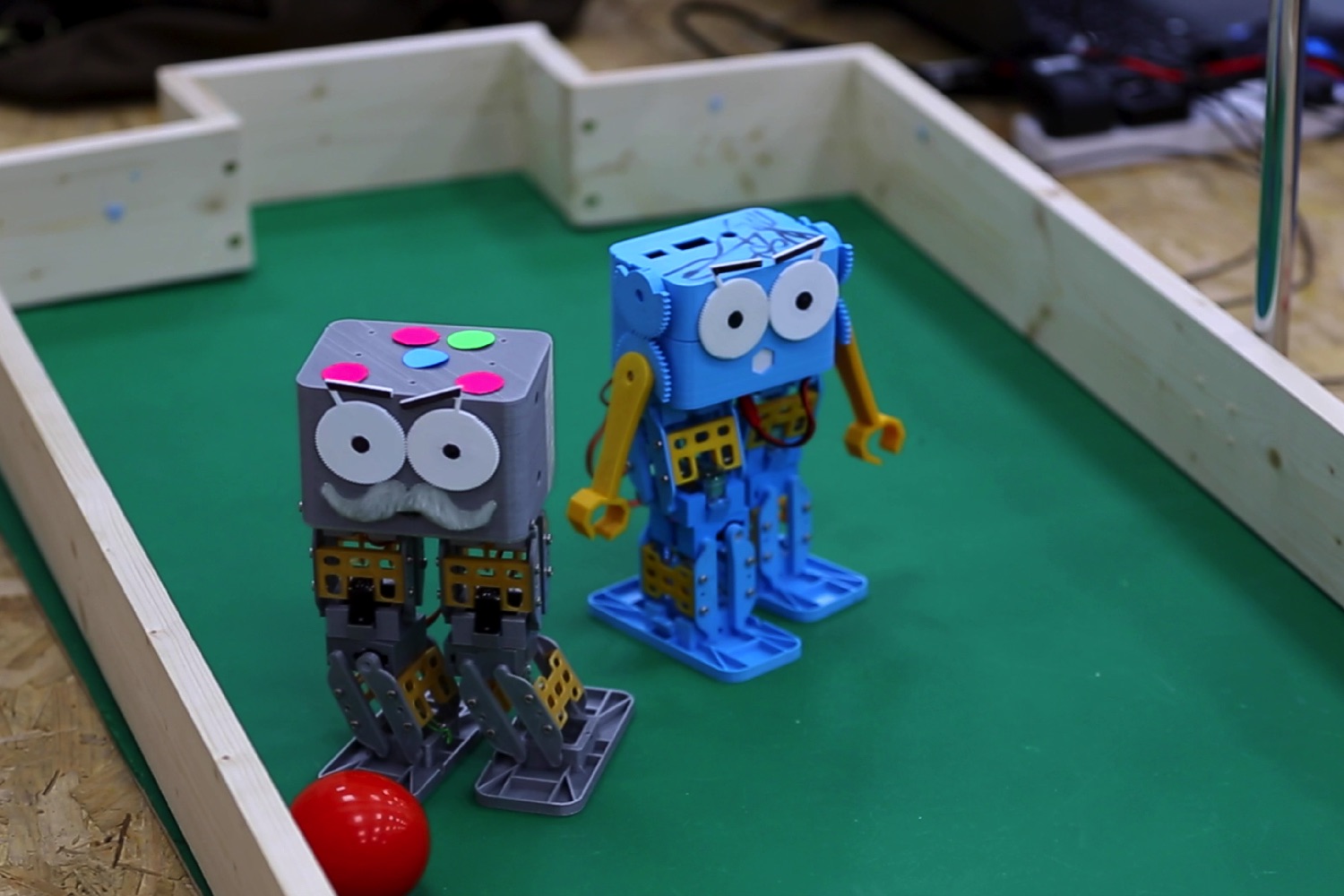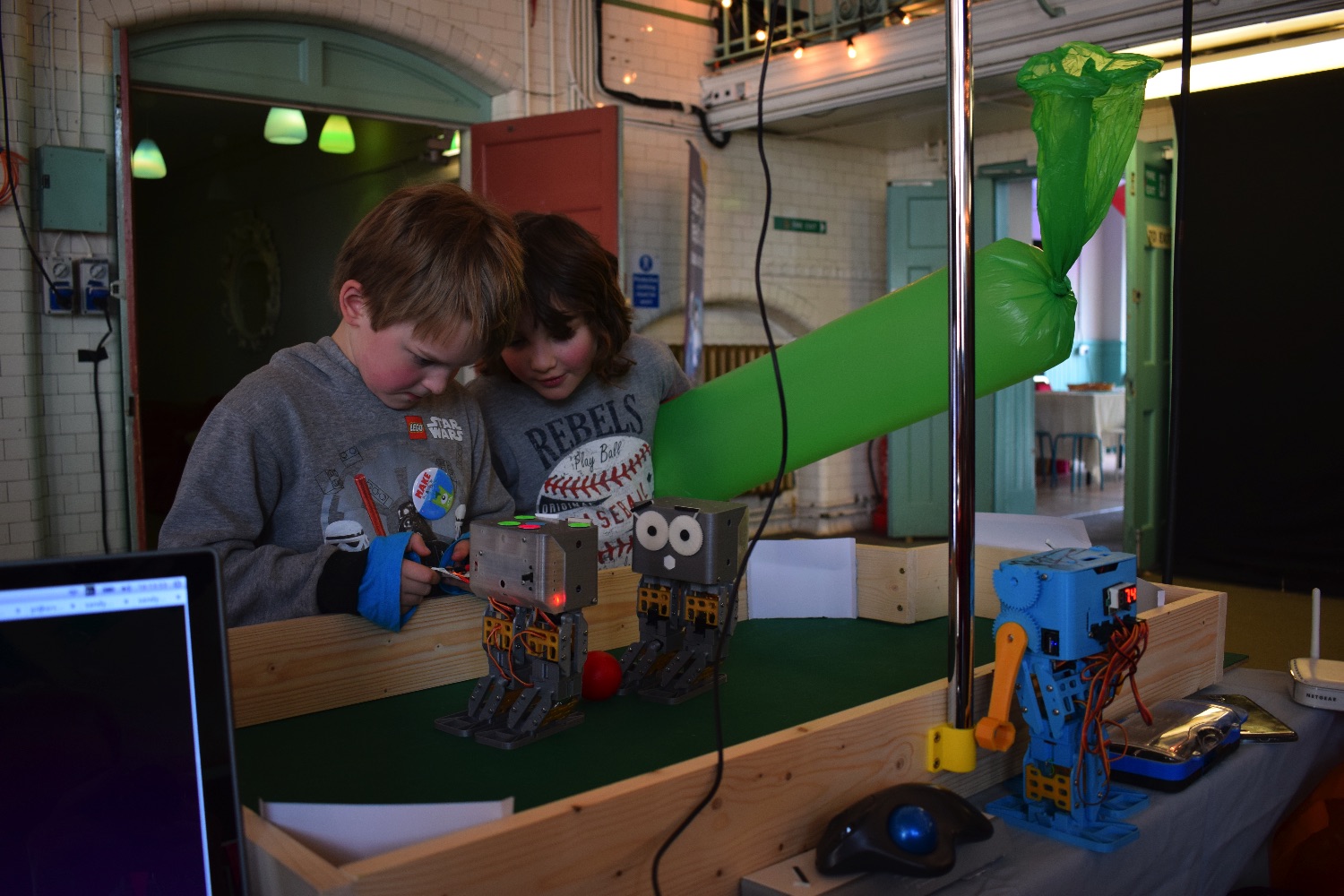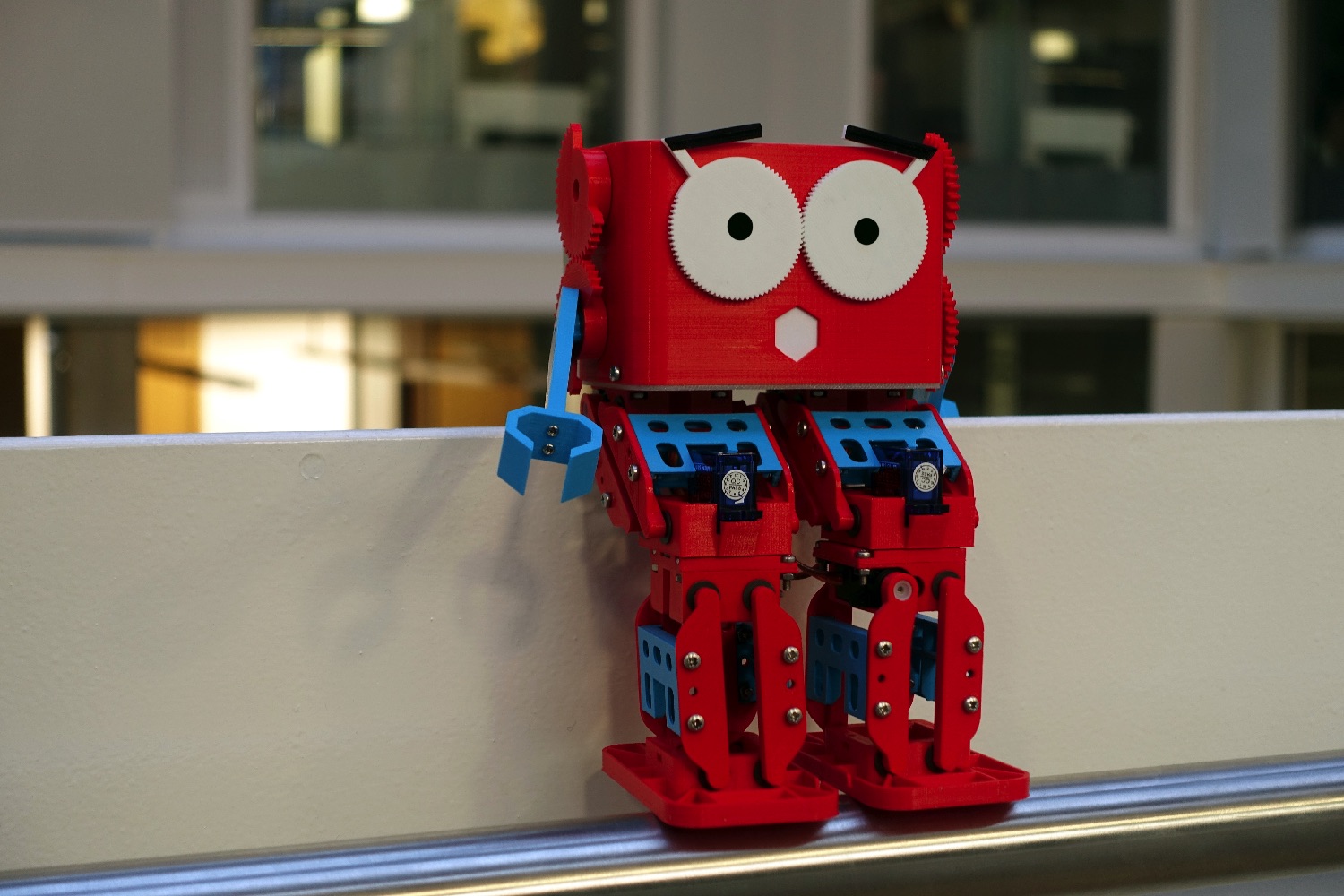To make things even cooler, he’s totally customizable using 3D-printed parts, which let you easily upgrade him.
“Marty is designed to bridge the gap between smart toys and a real robot,” creator Alexander Enoch told Digital Trends. “[He’s] a cute little robot that can be played with like any other toy, but which provides opportunities to get stuck in with real programming and engineering. It was really important to us that we made something that could really provide a journey to users — from starting off remote controlling, then using the graphical programming language Scratch, through commonly used languages like Python, and even up to some university-level stuff if you want to go that far.”
Enoch explained that Marty began life as a side project while he was writing up his PhD in robotics.
“I’d looked at what educational robots were on the market, and thought there was a bit of a gap for one which was, well, more of a real robot,” he continued. “The advanced robots that were available were all pretty pricey, and often difficult to use, too. There are some very good wheeled robots available, but from doing lots of robot demos over the years I’ve seen how much an anthropomorphic robot can grab interest and attention over a simple buggy. Walking robots are fantastic for engaging people, and they also let you explore some more advanced topics in robotics.”
Marty was recently launched as a Indiegogo crowdfunding campaign, which successfully ended this past weekend. However, since it’s now in Indiegogo’s “InDemand” program, it’s still possible to sign up — and even get some money off the eventual retail price, when he ships early next year.
“[Robotics and engineering are subjects] best learned by doing,” Enoch said. “It’s so much more engaging to physically make something, and to be able to do some programming and see something happening in the real world. Not every kid is going to be a programmer or engineer, but it’s important that as many kids as possible are given the opportunity to get engaged with these subjects and explore them.”
You can’t argue with that logic!
